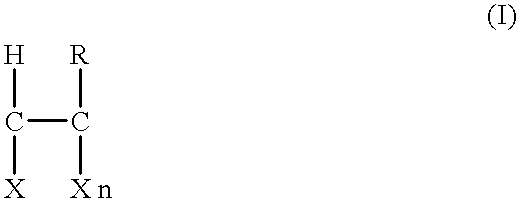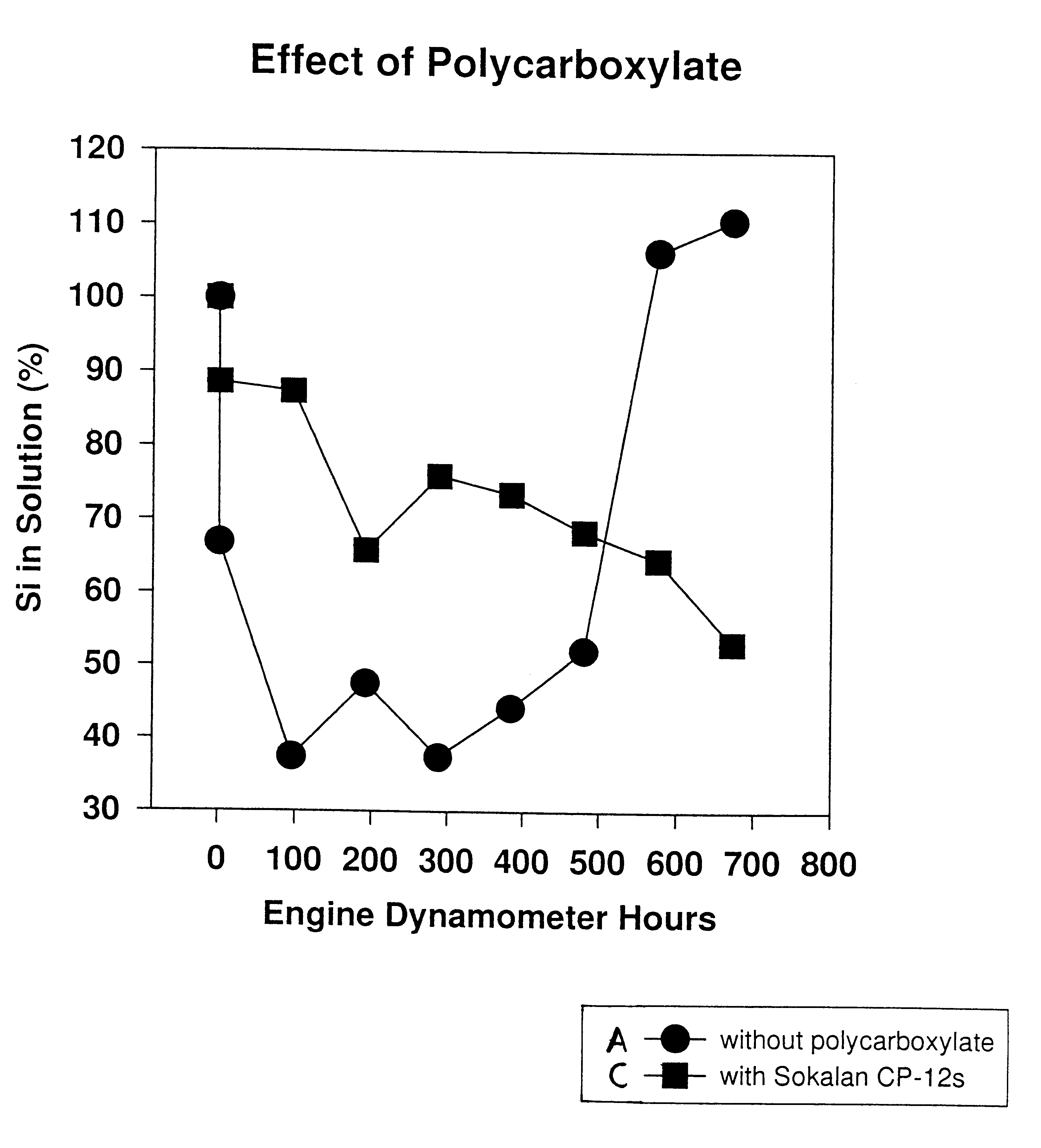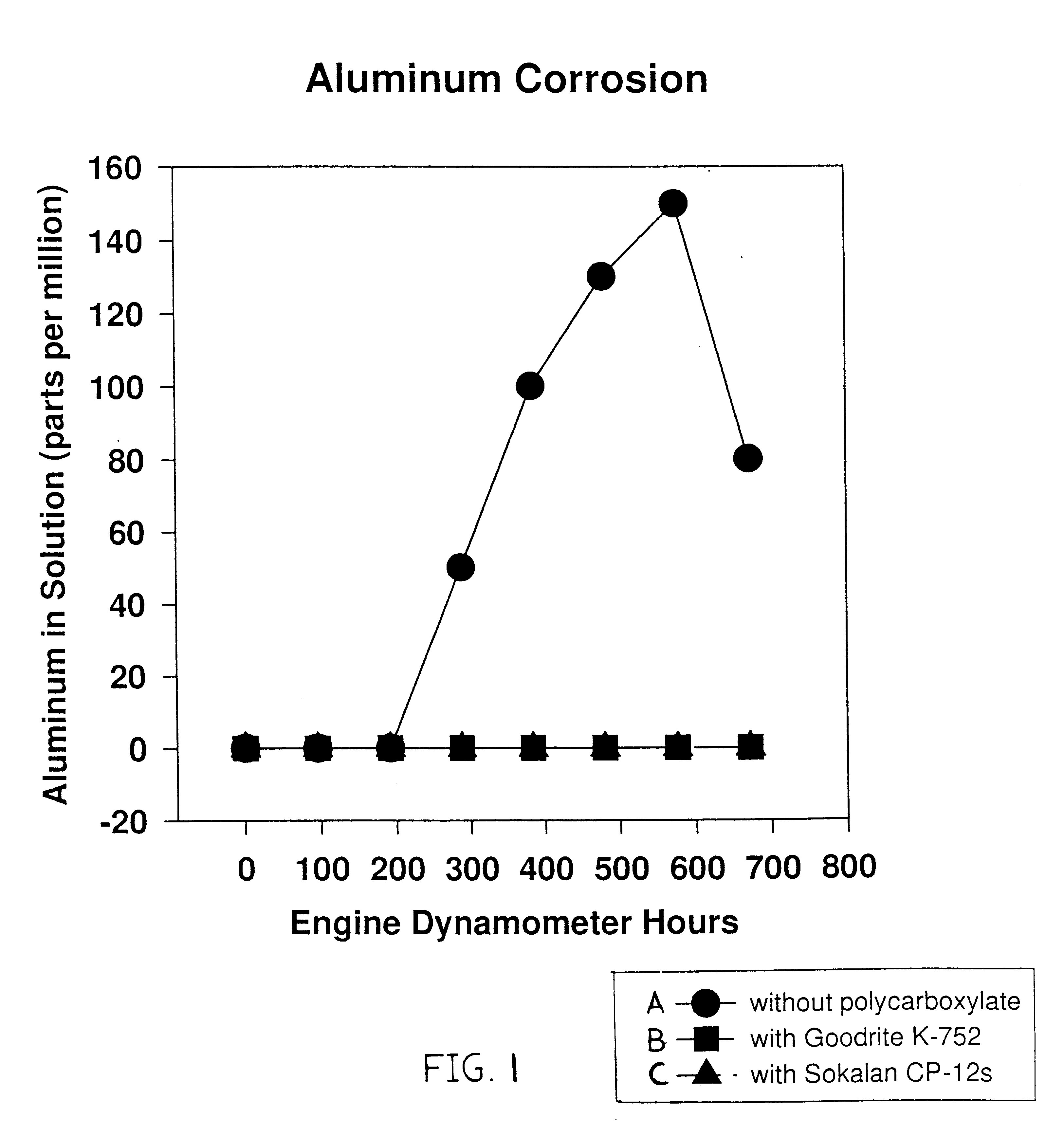Extended engine coolant lifetime through polymeric polycarboxylate secondary silicate stabilization
a technology of secondary silicate and polycarboxylate, which is applied in the direction of heat exchange elements, chemistry apparatus and processes, other chemical processes, etc., can solve the problems of compositions that may produce heat corrosion and need corrosion protection, and achieve the desired resistance to cavitation erosion corrosion and inhibit cavitation erosion corrosion
- Summary
- Abstract
- Description
- Claims
- Application Information
AI Technical Summary
Benefits of technology
Problems solved by technology
Method used
Image
Examples
example 1
As shown in FIG. 1, the polymeric polycarboxylate containing coolant compositions B (with GOOD-RITE.RTM. K752 polycarboxylate), and C (with SOKALAN.RTM. CP-12s polycarboxylate) completed the Ford engine dynamometer FLTM BL 2-2 test with satisfactory aluminum corrosion results. Coolant Composition A (without the polycarboxylate) did not pass the test. After 200 hours aluminum corrosion begins for the specimen in Composition A. The corrosion of aluminum resulted in 160 ppm aluminum in solution after 600 hours. No aluminum or corrosion products in solution were observed for Compositions (B and C).
example 2
FIG. 2 shows the percent silicate in solution for Composition A (without the polycarboxylate) vs. Composition B (with GOOD-RITE.RTM. K752 polycarboxylate) as a function of the addition of the polycarboxylate, specifically the GOOD-RITE.RTM. K752 in combination with the stabilized siloxane silicate and other synergistically acting components including the water soluble nitrate, water soluble phosphates, azole compound, water soluble molybdate, sodium hydroxide in the glycol solution. As shown in the Ford engine dynamometer FLTM BL 2-2 test, the silicate level drops precipitously for Composition A without the selected polycarboxylate additive. At 100 hours the silicate level of Composition A is less than 40% of the initial value. It should be noted that the silicate level of Composition A increases near the end of the test. It is our theory that the increase is due to corrosion of the silicon containing aluminum engine alloy. Composition B containing the selected GOOD-RITE.RTM. K752 p...
example 3
FIG. 3 shows the effect of adding Composition C (with SOKALAN.RTM. CP-12s polycarboxylate) to the antifreeze solution used in combination with the stabilized siloxane silicate and other synergistically acting components including the water soluble nitrate, water soluble phosphates, azole compound, water soluble molybdate, sodium hydroxide in the glycol solution. In a similar manner as shown in FIG. 1 in the Ford engine dynamometer FLTM BL 2-2 test, when utilizing Composition B (with GOOD-RITE.RTM. K752 polycarboxylate), Composition C (with SOKALAN.RTM. CP12s polycarboxylate) retards silicate depletion for the duration of the standard 672 hour test. Moreover, when this test was extended to 1064 hours, more than 50% of the silicate remained in solution without exhibiting any aluminum corrosion products in solution, which is equivalent to approximately 70,000 highway miles.
PUM
| Property | Measurement | Unit |
|---|---|---|
| Fraction | aaaaa | aaaaa |
| Percent by mass | aaaaa | aaaaa |
| Percent by mass | aaaaa | aaaaa |
Abstract
Description
Claims
Application Information
 Login to View More
Login to View More - R&D
- Intellectual Property
- Life Sciences
- Materials
- Tech Scout
- Unparalleled Data Quality
- Higher Quality Content
- 60% Fewer Hallucinations
Browse by: Latest US Patents, China's latest patents, Technical Efficacy Thesaurus, Application Domain, Technology Topic, Popular Technical Reports.
© 2025 PatSnap. All rights reserved.Legal|Privacy policy|Modern Slavery Act Transparency Statement|Sitemap|About US| Contact US: help@patsnap.com



